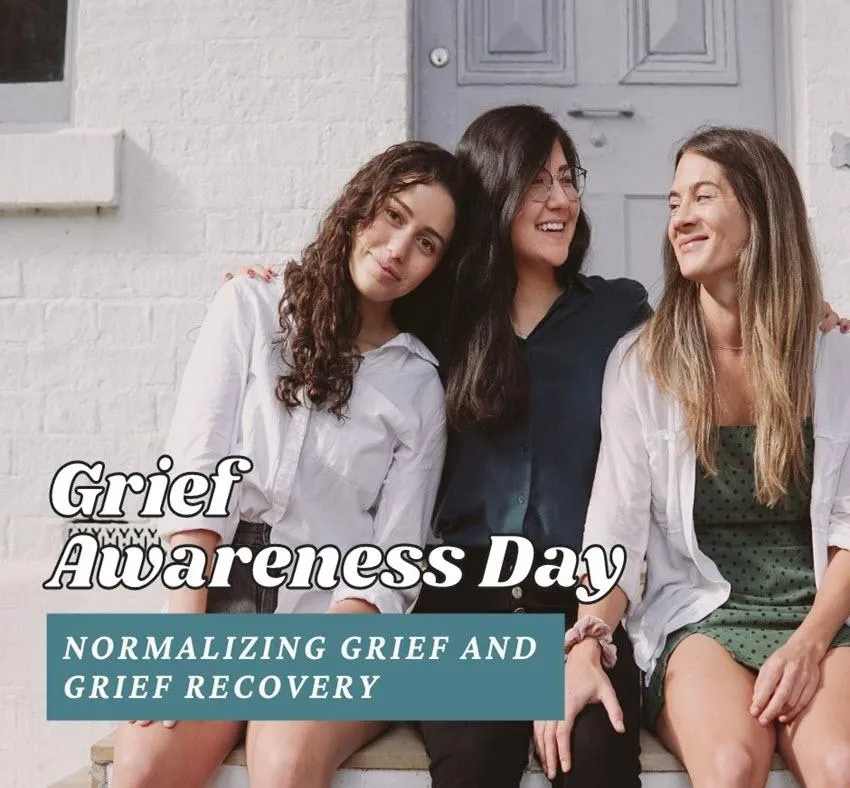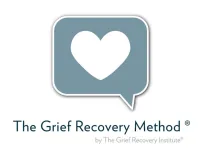
Grief Awareness Day: Normalizing Grief and Grief Recovery

You’ve probably heard this famous Benjamin Franklin quote, “…nothing can be said to be certain except death and taxes.”
We say grief should be on that list too.
Raise your hand if you’ve experienced the heartache of a break-up, the death of a friend, family member, or pet, a miscarriage, loss of trust, losing a job, a child leaving home, bankruptcy, retirement or any other loss?
There’s a huge likelihood that you have.
August 30 is Grief Awareness Day, a perfect time to spread the word that everyone grieves, that grief is normal and natural and that no one should grieve alone.
HOW DID GRIEF AWARENESS DAY START
Grief Awareness Day was founded in 2014 by Angie Cartwright. Angie knew what it was like to experience grief and the loneliness and misinformation that comes along with it. As a young child her sister died, then years later she lived through the death of her husband and mother. In fact, Angie chose August 30 for Grief Awareness Day to honor her mother’s birthday.
Angie Cartwright’s goal in creating this day was not only to educate others about grief but to inspire people to be honest about their own heartache so that grievers around the world would know that they aren’t alone. Angie even started a petition to make Grief Awareness Day a national holiday.
GRIEF EDUCATION
Grief Awareness Day is the perfect time to discuss misinformation about grief. One popular example is the infamous stages of grief. In 1969, Elizabeth Kubler Ross wrote the book On Death and Dying in which she discussed emotions that a patient might feel upon finding out they have a terminal illness. I’m sure you know the stages: Denial, Anger, Bargaining, Depression, and Acceptance. The problem is that people have applied these arbitrary stages that a terminal patient might feel to something that all grievers do feel. And it’s simply not true. Some grievers cry, some don’t. Some grievers are angry, others are not. Grief is unique to each individual, so classifying stages can be harmful.
Although there are no stages of grief, there are common characteristics that grievers may experience. Difficulty concentrating and sleeping, or changes in their eating habits are just a few.
Another huge piece of misinformation is the advice people give about grief. Have you ever heard the myth that grief just takes time? In over 40+ years helping grievers we’ve found that time hasn’t healed anyone’s broken heart. It’s the action someone takes during a certain time frame that helps them recover.
Or have you heard or that you should keep busy? All that keeping busy does is distract grievers from their feelings. Keeping busy keeps people stuck in their pain.
WHAT CAN YOU DO?
Awareness is a great first step. A plan to recover is a logical next step. For over 40 years the Grief Recovery Method has helped countless grievers heal their broken hearts and trained thousands Certified Grief Recovery Specialists to help others using a program that is proven to work.
So let’s all unite to help society become more aware that grief is normal and natural and that The Grief Recovery Method heals broken hearts when someone is willing to do the work. Let’s make sure grievers get the support they need.
Here are a few actionable steps you can take today to get started:
Share this blog
Check on someone you know who has a broken heart
Give a copy of The Grief Recovery Handbook
Join our 90-Day Heal your Heart Challenge
Become a Certified Grief Recovery Specialist
Are you grieving and interested in knowing more?



